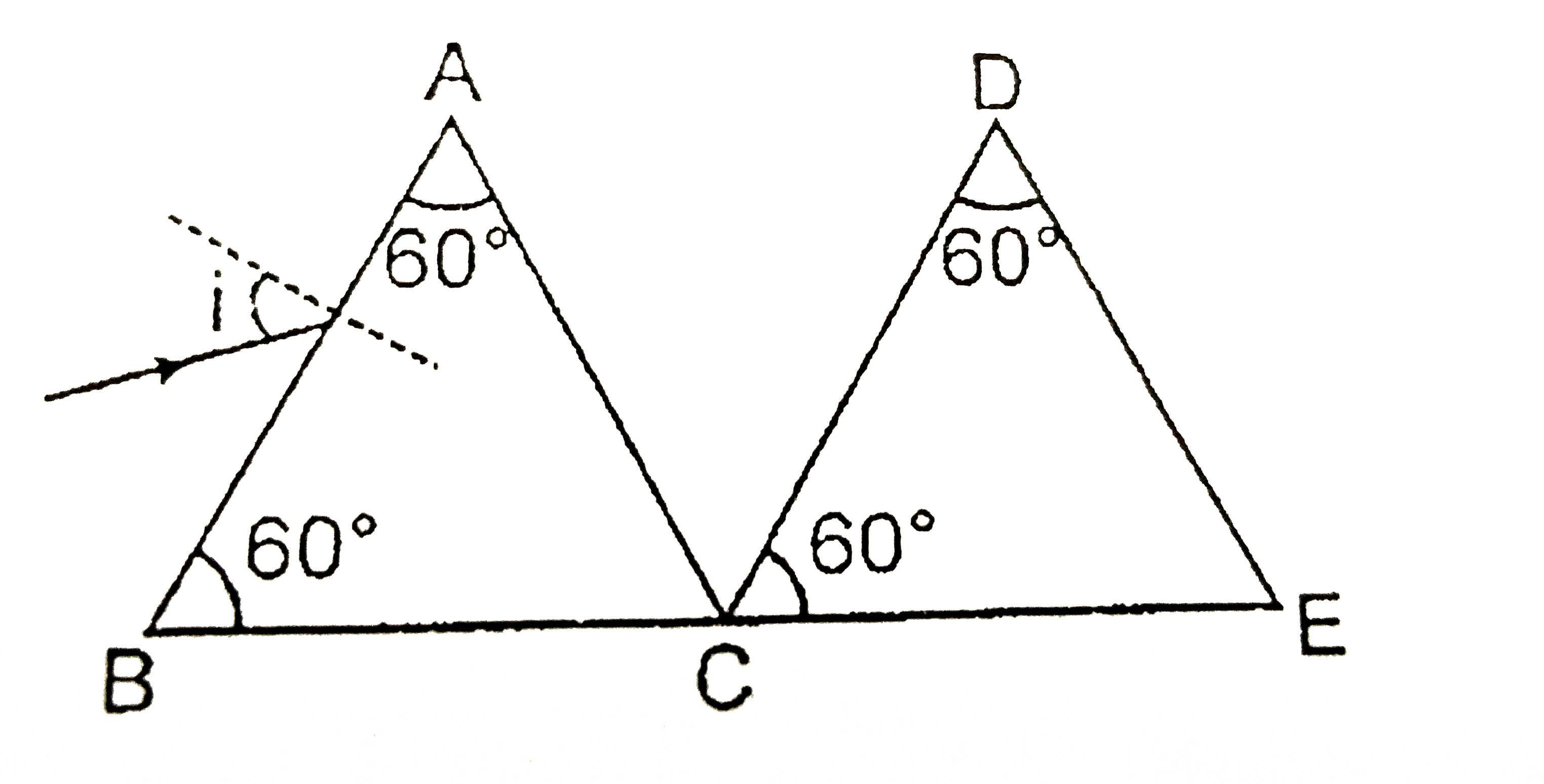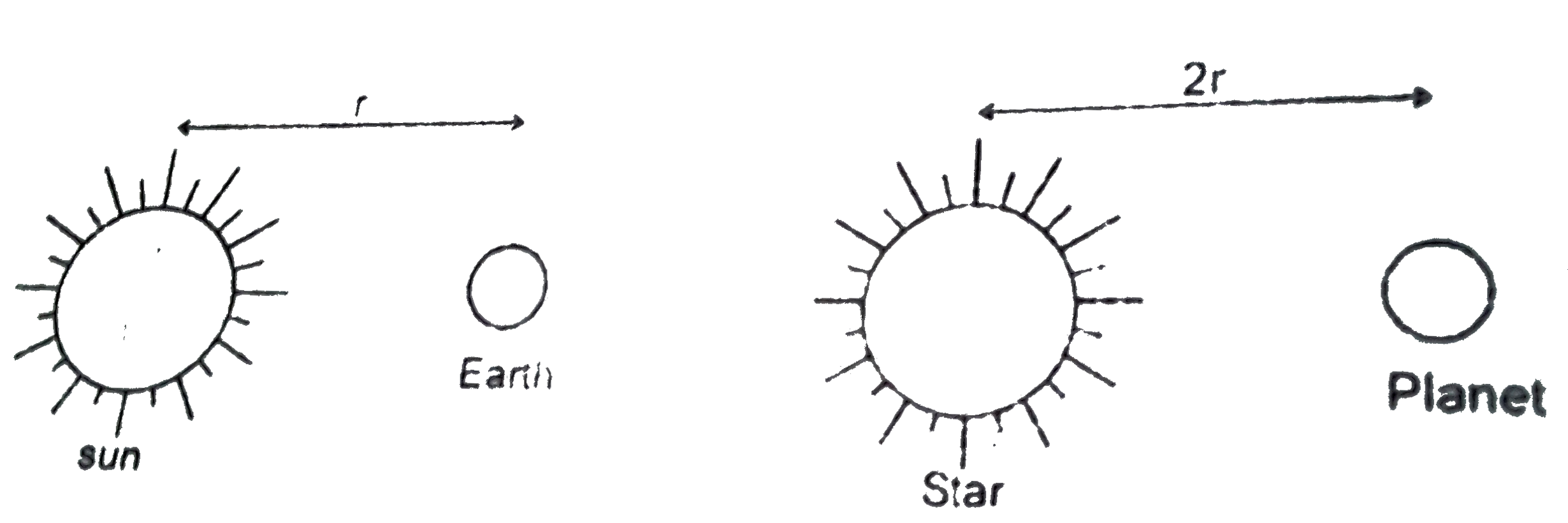A light ray falling at an angle of45∘ with the surface of a clean slab of ice of thickness 1.00 m is refracted into it at an angle of 30°. Calculate the time taken by the light rays to cross the slab. Speed of light in vacuum =3×108ms−1
The correct Answer is:2/3×10−8sec
NA
Topper's Solved these Questions
- GEOMATRICAL OPTICS Book:RESONANCE ENGLISHChapter:GEOMATRICAL OPTICS Exercise:Exercise-2
Explore 62 Videos
- GEOMATRICAL OPTICS Book:RESONANCE ENGLISHChapter:GEOMATRICAL OPTICS Exercise:Exercise-3
Explore 78 Videos
- GEOMATRICAL OPTICS Book:RESONANCE ENGLISHChapter:GEOMATRICAL OPTICS Exercise:Problem
Explore 33 Videos
- EXPERIMENTAL PHYSICSBook:RESONANCE ENGLISHChapter:EXPERIMENTAL PHYSICSExercise:PART -II
Explore 10 Videos
- GRAVITATIONBook:RESONANCE ENGLISHChapter:GRAVITATIONExercise:HIGH LEVEL PROBLEMS
Explore 16 Videos
Similar Questions
An object is placed in front of a slab (μ=1.5) of thickness 6cm at a distance 28cm from it. Other face of the slab is silvered. Find the position of final image.
View SolutionIn the figure two triangular prism are shown each of refractive index √3 .
(a) Find the angle of incidence on the face AB for minimum deviation from the prism ABC ?
(b) Find the angle through which the prism DCE should be rotated about the edge passing through point C so that there should be minimum deviation from the system ?

View SolutionSee the following figure. Which of the object(s) shown in O2 figure will not form its image in the mirror.

View SolutionTwo full turns of the circular scale of a screw gauge cover a distance of 1 mm on its main scale. The total number of division on the circular scale is 50. Further, it is found that the screw gauge has a zero error of −0.03 mm while measuring the diameter of a thin wire, a student notes the main scale reading of 3 mm and the number of circular scale division in line with the main scale as 35. The diameter of the wire is
View SolutionLet a star be much brighter than our sun but its mass is same as that of sun If our earth has average lift span of man as 70years In the earth like planet of this star system having double the distance from our star find the average lift span of a man on this planet in terms of our year
 .
.
View SolutionA light ray falling at an angle of45∘ with the surface of a clean slab of ice of thickness 1.00 m is refracted into it at an angle of 30°. Calculate the time taken by the light rays to cross the slab. Speed of light in vacuum =3×108ms−1
View SolutionA ray of light passes normally through a slab mu=1.5 of thickness t . If the speed of light in vaccum be c , then time taken by the ray to go across the slab will be
View SolutionA light ray falling at an angle of 53∘ with the surface of a clean slab of ice of thickness 1.00m is refracted into it at an angle of 37∘. Calculate the time taken by the light rays to cross the slab. Speed of light in vaccum =3×108m/sec.
View SolutionA light ray falling at 60^(@) angle with the surface of fa glass slab of thickness 1 m and is refracted at angle 75^(@) with the surface, Calculate the time taken by the light to cross the slab [(2)/(3)xx10^(-8)s]
View SolutionA light ray falling an agnle of 60∘ with the surface of a clean slab of thickness 1.00m is refracted into, it an angle of 15∘. Calculate the time taken by the light rays to cross the slab. Speed of light in vacumm =3×109m/s
View SolutionIf a ray of light propagating in air strikes a glass slab at an angle of 60∘ with the surface of the slab, the angle of refraction is …......................
View SolutionA ray of light falls on a glass slab at an incident angle of 45∘ and refracted at angle of 30∘.
What is the measure of the angle of emergence 'e' ?
View SolutionIf a ray of light propagating in air strikes a glass slab at an angle of 30∘ with the surface of the slab, the angle of refraction is
View SolutionA ray of light passes normally through a slab (mu=1.5) of thickness t. If the speed of light in vacuum be C, then time taken by the ray to go across the slab will be
View SolutionA light ray falling at an angle of45∘ with the surface of a clean slab of ice of thickness 1.00 m is refracted into it at an angle of 30°. Calculate the time taken by the light rays to cross the slab. Speed of light in vacuum =3×108ms−1
View SolutionA ray of light passes normally through a slab of thickness t. IF the speed of light in vaccum be C, then time taken by the ray to go across the slab will be
View Solution
